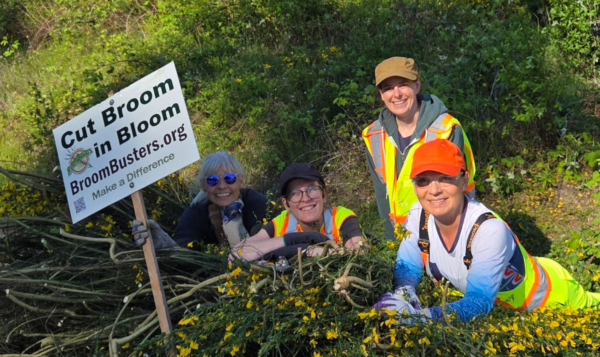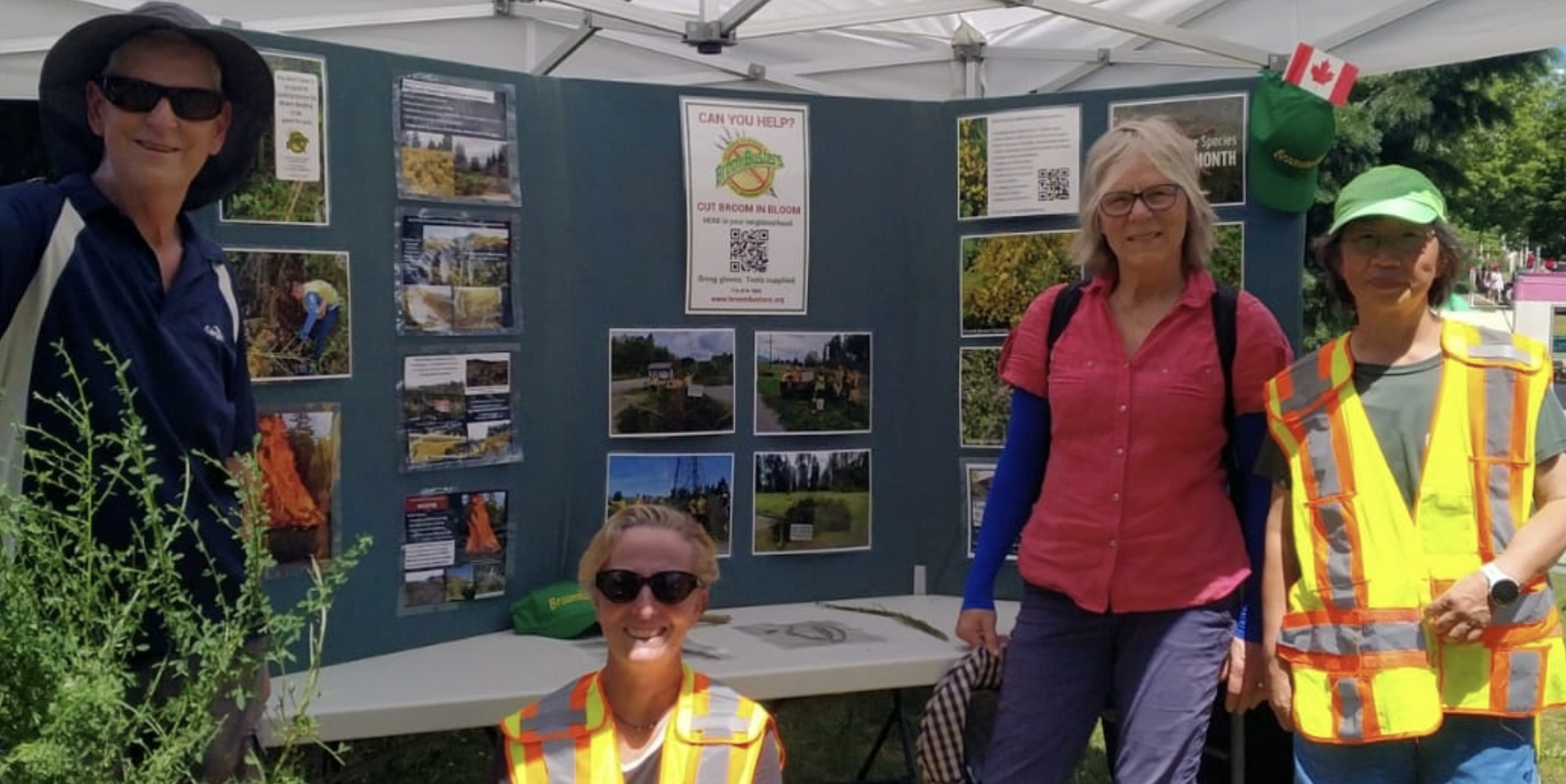Broombuster volunteers in Coquitlam wrapped up another successful broom-busting season on June 8, after weeks of determined community action against the invasive Scotch broom. While the bright yellow flowers may have vanished, an abundance of pea pods now line broom branches—each pod ready to explode and disperse up to 18,000 seeds per plant.
Across British Columbia, hundreds of Broombuster volunteers contributed more than 5,000 hours of work in areas from North Cowichan to Comox Valley, Powell River, and right here in Coquitlam. In our city alone, volunteers logged over 200 hours of invasive plant removal at seven community events.

Thanks to dedicated individuals, work was done in the following areas:
- Glen Park – targeted due to substantial new growth since 2022
- Don Roberts Park – cleared regrowth from road through trail
- Coquitlam Crunch (hydro corridor) – two events tackling regrowth and new shoots
- Maquabeak Park – cleaned up along the entrance lane and deep into old growth
- Mundy Park (hydro line) – focus on new and returning broom
- Coquitlam City Works Yard – three focused cuts removed long-standing growth
- Anmore – the Anmore Garden Club held its own 3-hour broom-clearing initiative with local boy scouts
Where volunteers have cut broom, it’s making a huge difference to the ecosystem. “We’re proud of the work done in Coquitlam this year, and we’re already planning for 2026,” said Robbin Whachell, project lead for Coquitlam who started the local initiative in 2022. “We’ve also put in over 50 hours attending community events to share education on the invasive. Come visit us at Mundy Park on Wednesday, July 23 for Coquitlam’s Park Day from 11 a.m. to 2 p.m.”
Scotch broom is more than just a visual nuisance. It’s highly flammable, classified by FireSmart as one of the most dangerous plants for wildfire risk due to its oil-rich branches and dense, dry growth. It also disrupts biodiversity, displacing native grasses and plants critical to bees, birds, and grazing animals.
Researchers identify Scotch broom as the invasive species causing the most harm to at-risk species in BC. It competes with young trees in forests and causes millions in losses to forestry and agriculture each year.







Comments
NOTE: Tri-City Local News welcomes your opinions and comments. We do not allow personal attacks, offensive language or unsubstantiated allegations. We reserve the right to edit comments for length, style, legality and taste and reproduce them in print, electronic or otherwise. For further information, please contact the editor or publisher, or see our Terms and Conditions.